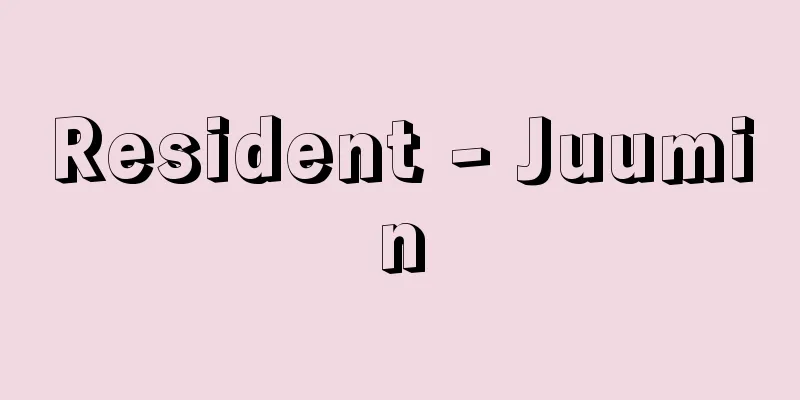Vientiane (English spelling)

|
The capital of Laos. It is located in the west of central Laos, facing the Mekong River, which forms the border with Thailand. It has long been one of the centers of the Lao people, and since the mid-14th century it has been part of the Lan Xang Kingdom, and in 1563 it became the capital of the Kingdom of Lan Xang, replacing Luang Prabang to the north. After the Lan Xang Kingdom split into the Kingdom of Luang Prabang and the Kingdom of Vientiane in 1707, it prospered as the capital of the Kingdom of Vientiane, but later came under Thai control, and was largely destroyed by the Thai invasion in 1828. When Laos was incorporated into French Indochina in 1899, the city became the administrative capital. When the Lao Kingdom was recognized as completely independent by the Franco-Lao Treaty of 1953, the city became the administrative capital in contrast to the royal capital of Luang Prabang, and became the sole capital of the Lao People's Democratic Republic in 1975. It is the largest city in Laos and the center of commerce and industry. It distributes and collects agricultural products, timber, shellac (a type of natural resin), silk, livestock, and leather. Commercial activities have been mainly carried out by residents of Indian, Chinese, and Vietnamese descent. In Laos, where modern industry is underdeveloped, it is the only manufacturing center, and there are tobacco, plastic bag, rubber sandal, rice milling, lumber, brick, tile, and textile factories in and around the city. There are many Buddhist temples in the city, and as a cultural center, there are the National Museum and the Pali Sanskrit Institute, and higher education institutions such as Sisavangbon University. It is connected by road to Luang Prabang and Hanoi, the capital of Vietnam, but communication with other cities in the country and abroad is largely by air. It is connected by ferry to Nong Khai on the opposite bank of the Mekong River, and is connected to Thailand's railway and road network. Population: 194,200 (2003 estimate). Source: Encyclopaedia Britannica Concise Encyclopedia About Encyclopaedia Britannica Concise Encyclopedia Information |
|
ラオスの首都。ラオス中部西寄りにあり,タイとの国境をなすメコン川に臨む。古くからラオ族の中心地の一つで,14世紀半ば以降ラーンサーン王国の版図に入り,1563年北のルアンプラバンに代わってラーンサーン王国の首都となった。1707年ラーンサーン王国がルアンプラバン王国とビエンチャン王国に分裂してからは,ビエンチャン王国の首都として繁栄したが,のちタイの支配下に置かれ,1828年にはタイの侵攻により大きく破壊された。1899年ラオスがフランス領インドシナに編入されるとともに,その行政府が市に置かれた。1953年のフランス=ラオス条約によりラオス王国の完全独立が認められると,ルアンプラバンの王都に対して,市は行政首都となり,1975年ラオス人民民主共和国の成立後単独の首都となった。ラオス最大の都市で,商工業の中心地。農産物,木材,シェラック(天然樹脂の一種),絹織物,家畜,皮革などを集散する。商業活動はこれまでおもにインド系,中国系,ベトナム系の住民によって担われてきた。近代工業が未発達のラオスにおいて,実質的に唯一の工業中心地で,市内外にはたばこ,プラスチック製袋,ゴムサンダル,精米,製材,煉瓦,タイル,織物などの工場がある。市内には仏教寺院が多く,文化中心地として国立博物館,パーリ・サンスクリット研究所などがあり,シサバンボン大学など高等教育機関が集まる。ルアンプラバンやベトナムの首都ハノイなどと道路で結ばれるが,内外の都市との連絡は空路に大きく依存する。メコン川対岸のノーンカーイとフェリーで結ばれ,タイの鉄道・道路網と連絡する。人口 19万4200(2003推計)。
出典 ブリタニカ国際大百科事典 小項目事典ブリタニカ国際大百科事典 小項目事典について 情報 |
<<: Kingdom of Vientiane - Kingdom of Vientiane
Recommend
Akaishi sphenoid (English spelling)
The Akaishi Mountains are a triangular region betw...
Hvar (Island) (English spelling)
An island in southern Croatia, off the Adriatic co...
Urajiro no Ki - Urajiro no Ki
A deciduous tall tree of the Rosaceae family that ...
Micropotamogale lamottei (English spelling) Micropotamogalelamottei
…They give birth to two young per litter. There i...
Gallinago megala (English spelling) Gallinagomegala
… [Shinji Takano]. … *Some of the terminology tha...
Sayori (English spelling) halfbeak fish
A marine fish belonging to the family Halfbeak, o...
Pteroeides sparmanni (English spelling) Pteroeidessparmanni
…Spiny shrimps sometimes live in the grooves that...
Hagedorn, AL
...The random change in gene frequency due to the...
Anti-Russian Comrades Association - Tairo Doushikai
An organization that promoted foreign policy befo...
mountain arnica
...This is more common in the northern part of th...
Leptothrix
…They oxidize iron in the water and accumulate la...
Ishibara Kakan - Ishibara Kakan
The Turkic people ruled over northern and central...
Soga Chokuan
Years of birth: unknown. A painter from the Momoya...
Ammann, J.
…A sect founded in the late 17th century by Jacob...
Hybrid
An individual resulting from the crossbreeding of...









